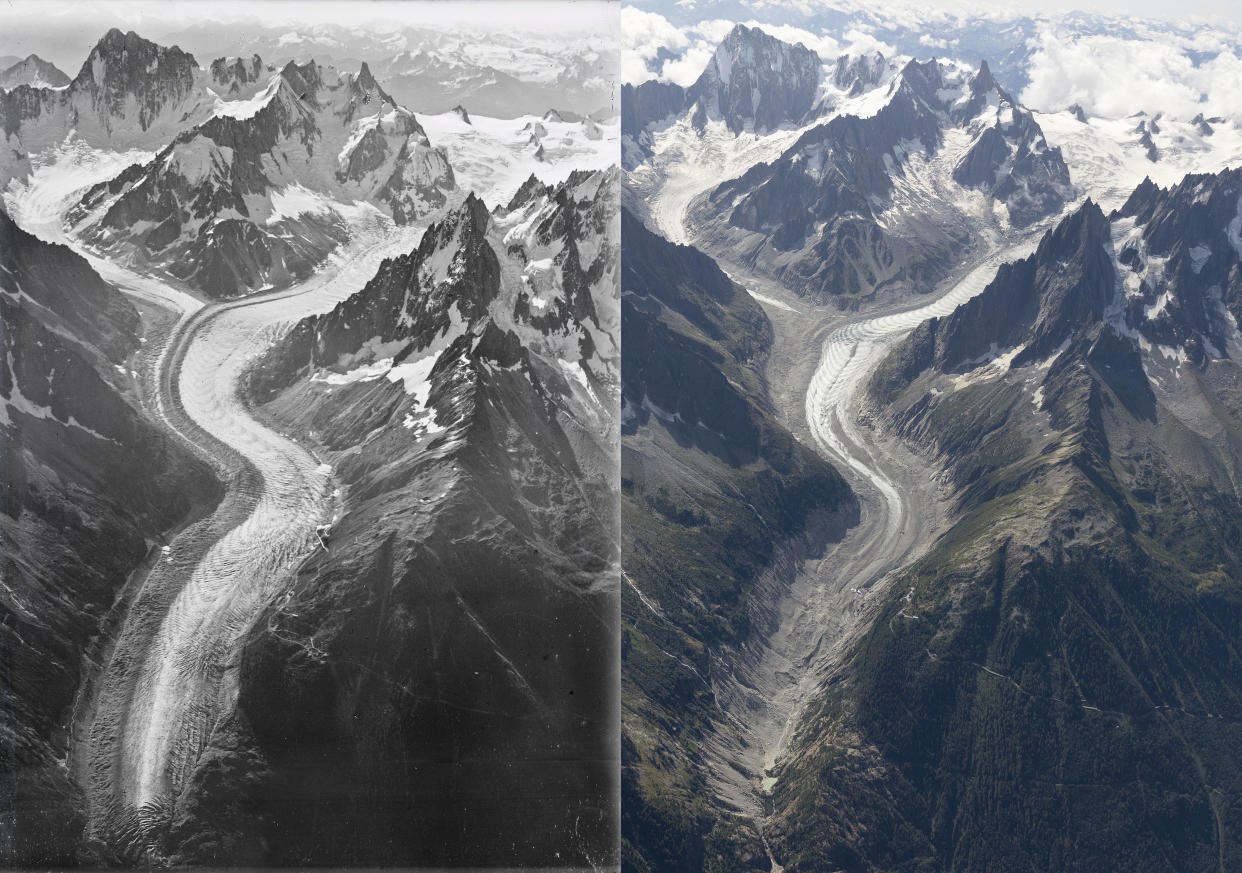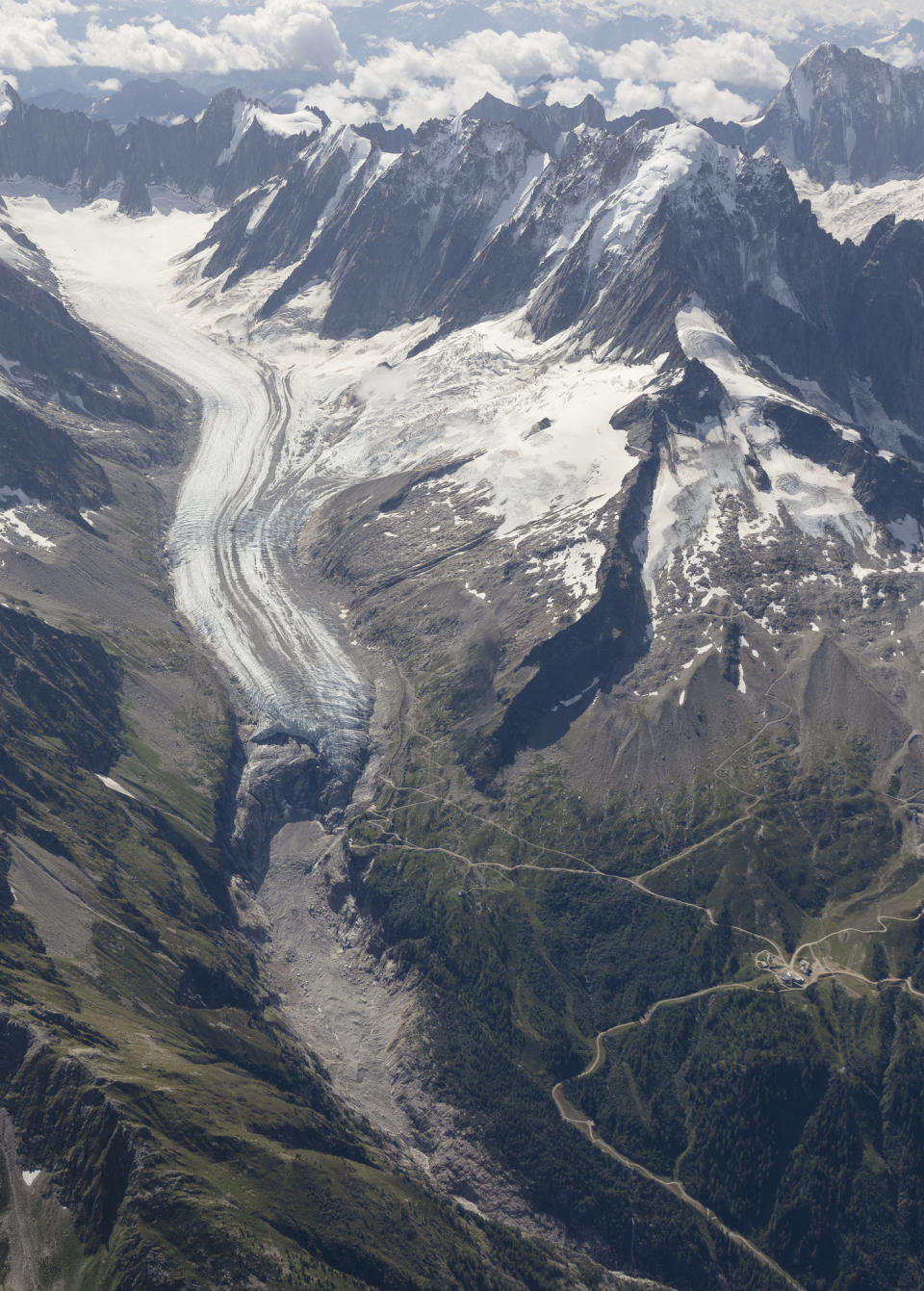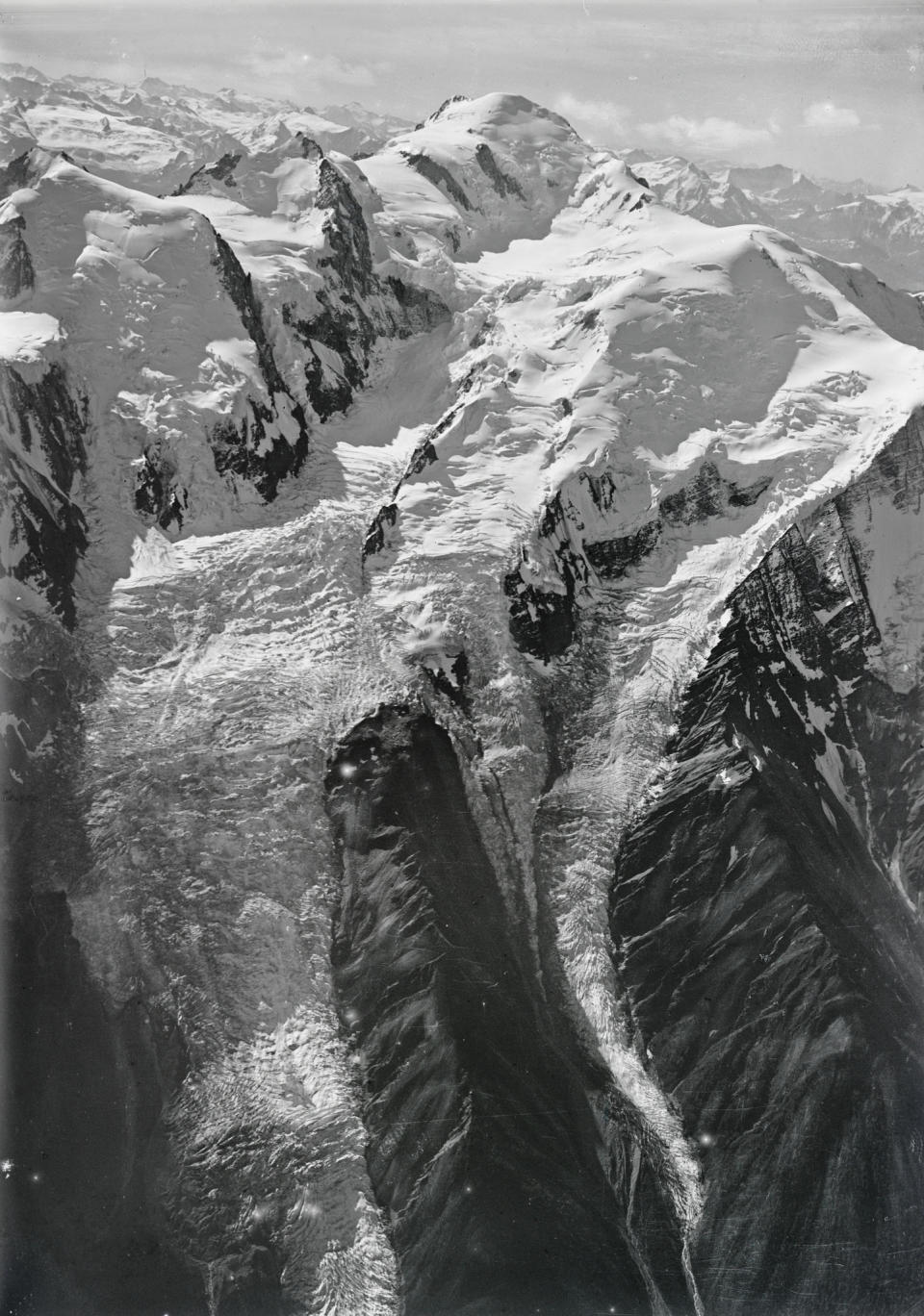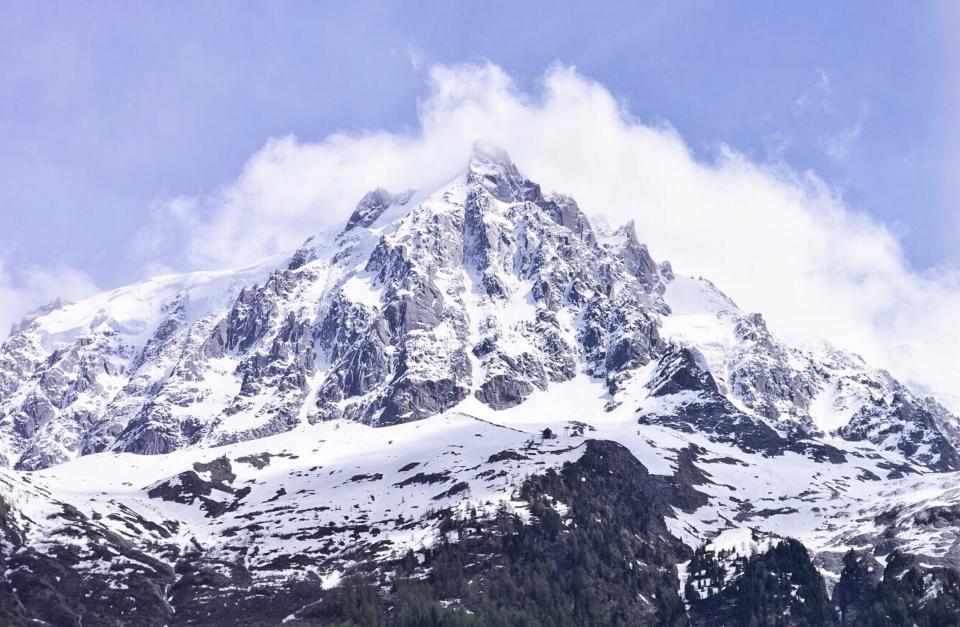Dramatic images taken 100 years apart show glacier loss on Mont Blanc

Sobering images show the extent of ice loss on Mont Blanc over the past decade, highlighting the toll climate change has taken over time in the Alps.
An aerial photograph taken in 1919 shows the Mer de Glace valley glacier, compared with a photo taken this year, which shows how much it has melted away, a visible symbol of the reality of global warming.
A century ago, Swiss pilot and photographer Walter Mittelholzer flew over Mont Blanc in a biplane to photograph the landscape around the mountain in southern France.
Using multiple GPS devices, scientists from the University of Dundee located the exact spot he captured 100 years ago in August, revealing it this week.
Kieran Baxter and Alice Watterson from the 3DVisLab at Duncan of Jordanstone College of Art and Design, part of the University of Dundee in Scotland have recreated his photographs to show the impact that climate change in response to the warming of the Earth.


Using a process called monoplotting to triangulate the original camera position and flew over the Mont Blanc massif, returning to the spot in a helicopter and lined up their cameras using the alpine peaks as their guide.
Dr Baxter hung from the side of the helicopter as it hovered at a height of around 4,700 metres, just below the summit of Mont Blanc, to capture the images of three glaciers that Mittelholzer had also photographed: the Bossons glacier, the Argentière glacier and the Mer de Glace, all on the northern side of the Mont Blanc massif.

The resulting photographs show just how much ice has been lost from the region over the past century.
“The scale of the ice loss was immediately evident as we reached altitude but it was only by comparing the images side-by-side that the last 100 years of change were made visible,” Dr Baxter said.
"It was both a breathtaking and heartbreaking experience, particularly knowing that the melt has accelerated massively in the last few decades.
READ MORE FROM YAHOO NEWS

French mayor urges action against Mont-Blanc 'wackos'
Powerful men like Trump 'want to silence' young climate activists
Would giving up meat really help save the planet?
“Mittelholzer played a key role in popularising commercial air travel in Switzerland, an industry which ironically came to contribute to the warming of the climate and the detriment of the alpine landscapes that the pioneering pilot knew and loved.
"Unless we drastically reduce our dependence on fossil fuels, there will be little ice left to in another hundred years.”
As the ice melts and falls from the Mer de Glace, it creates a dangerous hazard for both locals and the millions of tourists who visit the site annually while also drying up fresh water supplies, said Fabrizio Troilo, a geologist for the Safe Mountain Foundation, an Italian-based organisation.

 Yahoo News
Yahoo News 
